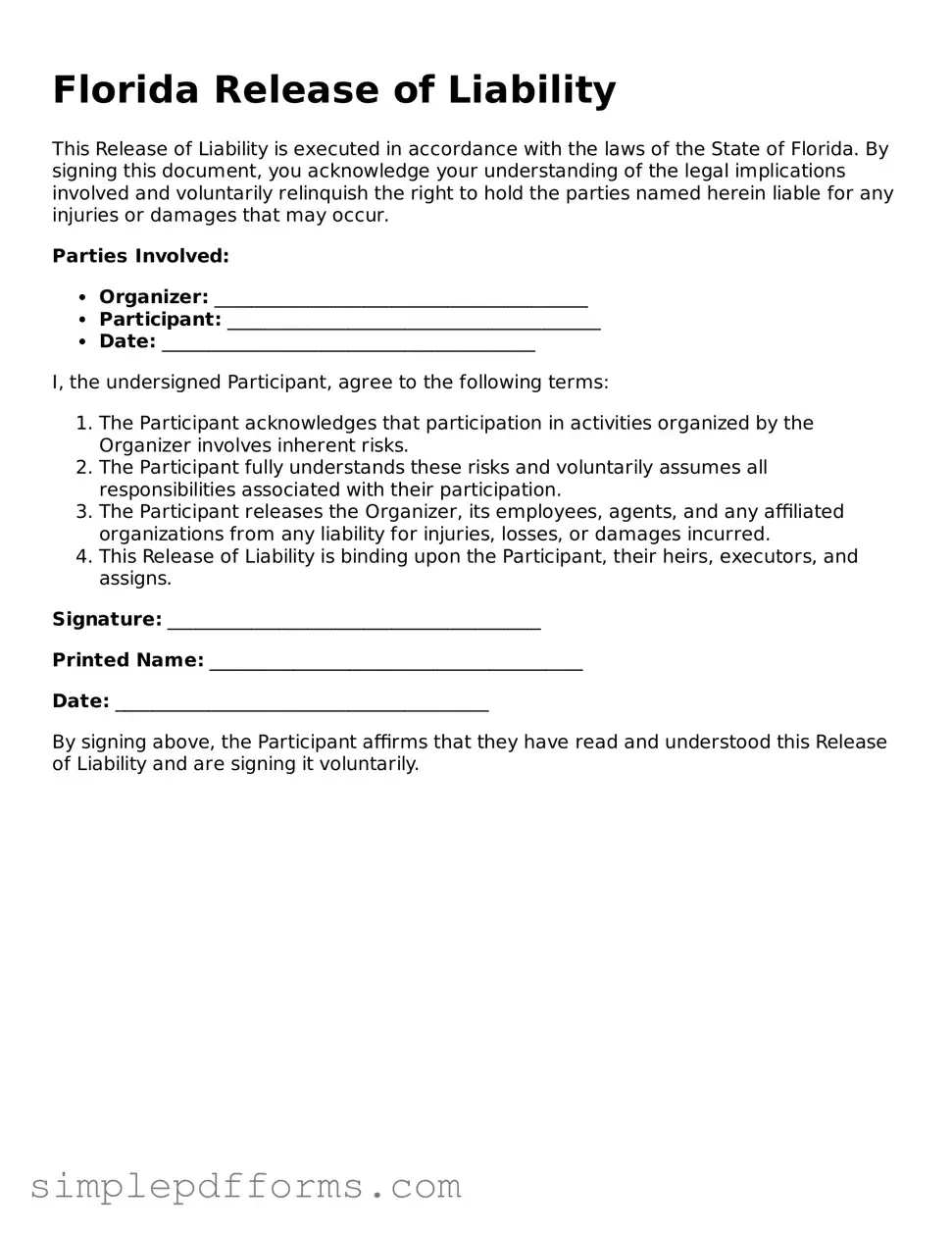Filling out a Florida Release of Liability form is an important step for individuals looking to protect themselves from potential legal claims. However, many people make common mistakes that can undermine the effectiveness of the document. Understanding these pitfalls can help ensure that the form serves its intended purpose.
One frequent mistake is failing to read the entire form thoroughly before signing. Individuals often skim through the document, missing crucial details that could impact their rights. Taking the time to understand each section is essential, as even a small oversight can lead to significant consequences.
Another common error is not providing complete and accurate information. Omitting relevant details or providing incorrect information can render the release invalid. It is vital to include all necessary personal information, such as full names and addresses, to avoid confusion or disputes later on.
Some individuals neglect to specify the activities covered by the release. A vague description can lead to misunderstandings about what is being waived. Clearly outlining the specific activities or events associated with the release ensures that all parties have a mutual understanding of the terms.
People sometimes forget to include a date on the form. A release without a date can create ambiguity regarding when the agreement was made, potentially complicating any future legal matters. Always ensure that the date is clearly indicated to establish a timeline for the agreement.
Another mistake is failing to have the form witnessed or notarized when required. Certain situations may necessitate a witness or notary to validate the release. Neglecting this step can lead to questions about the authenticity of the document and its enforceability.
Some individuals may overlook the importance of reading the waiver language carefully. The wording in a release can vary significantly, and understanding the implications of specific phrases is crucial. Misinterpreting these terms can lead to unintended waivers of rights.
Additionally, individuals often forget to check for any state-specific requirements. Florida may have unique regulations regarding liability waivers that differ from other states. Familiarizing oneself with these requirements can help ensure compliance and strengthen the release's validity.
People also sometimes fail to discuss the release with all parties involved. Open communication can prevent misunderstandings and ensure that everyone is on the same page regarding the terms of the agreement. Failing to do so can lead to disputes down the line.
Lastly, individuals may neglect to keep a copy of the signed release for their records. Retaining a copy is essential for both parties, as it serves as proof of the agreement and can be referenced in case of any future disputes. Always ensure that all parties have access to the finalized document.
